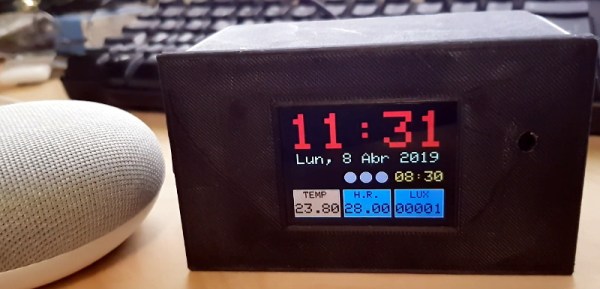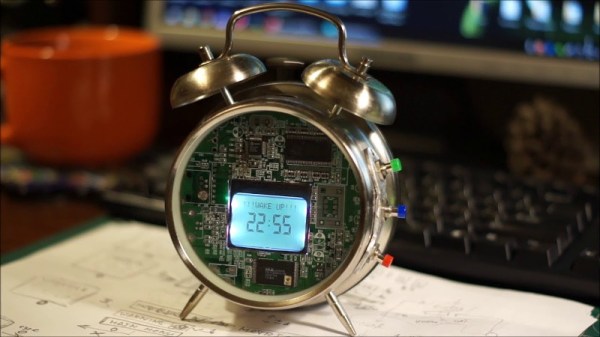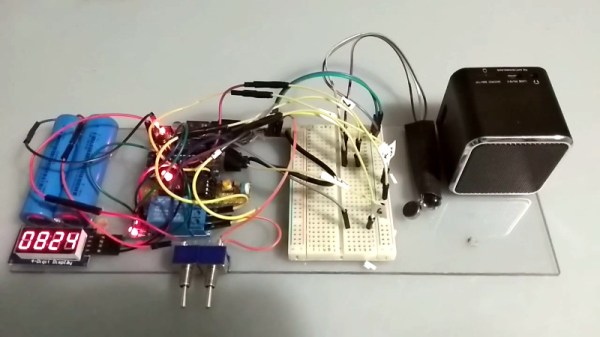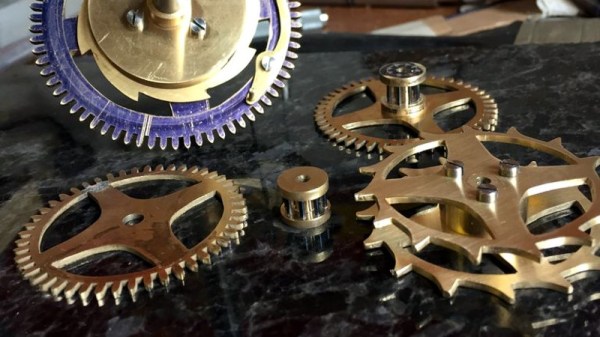All the hardcore geeks have alarm clocks where the bell striker is a hard disk read head… or at least they’ll be building them after seeing this. [Senile Data Systems] created an industrial voltage alarm clock out of decade counters that looks like it was unearthed from a fallout shelter (machine translation).
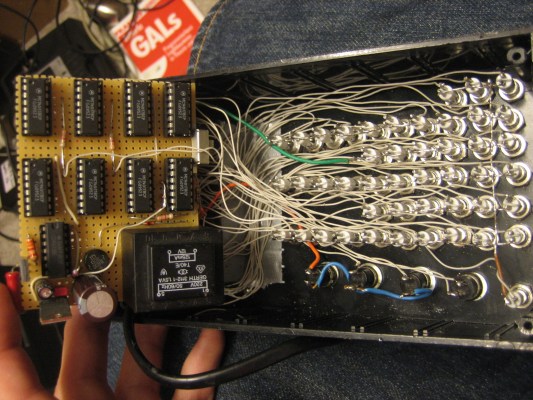 At first glace you might mistake this for a binary clock since it uses a column of LEDs to indicate each digit of 24-hour time. It’s not, as each row corresponds to a pin on the CD4017 decade counters that make up the timekeeping circuit inside.
At first glace you might mistake this for a binary clock since it uses a column of LEDs to indicate each digit of 24-hour time. It’s not, as each row corresponds to a pin on the CD4017 decade counters that make up the timekeeping circuit inside.
Thumbscrew wheel switches at the top of the bulky handheld unit are how the alarm time is set, triggering a bell along the top edge. The clock is driven by the 50 Hz line voltage and [SDS] tried using that AC to drive a solenoid as the striker on the prototype unit but it performed poorly. The use of a hard disk read head turns out to be the perfect striker, as heard in the video after the break. As for triggering from the decade counters, here’s what [SDS] told us about the design:
The switches’ outputs gets ANDed with a 10 Hz signal (on a 60 Hz grid it will become 12 Hz). This drives a slightly beefy transistor which in turn drives an electromagnet to hammer a bell which broke off my bicycle. Yes. This is a digital analog alarm clock. The clock portion is digital but the bell is analog and sounds like Grampa’s old wind up alarm clock.
The build came about when a cache of over 600 industrial LEDs (24 V – 48 V) fell into his lap. This makes the insides of the clock something to behold as point-to-point soldering connects the panel mount lights and all nine logic chips. Add in that transformer for getting the line voltage and we imagine this thing has quite a bit of heft to it.
If you’ve ever had an alarm with a wind-up bell you know there’s no better way to jolt yourself out of a peaceful slumber and into the chaos of the real world. If the gentle tinkle of the hard drive head isn’t enough for you, this fire bell alarm clock will certainly do the trick.
Continue reading “Breathtaking Alarm Clock Looks Like It Came From A 1960 Fallout Shelter”



